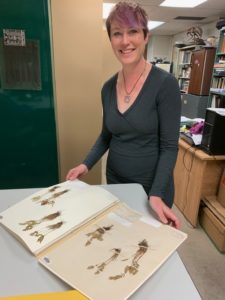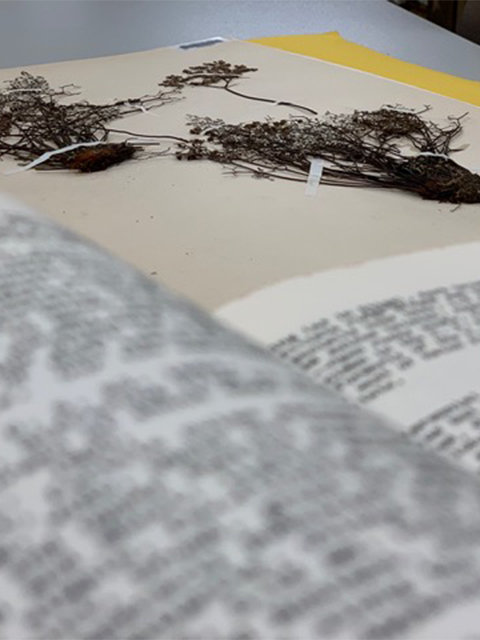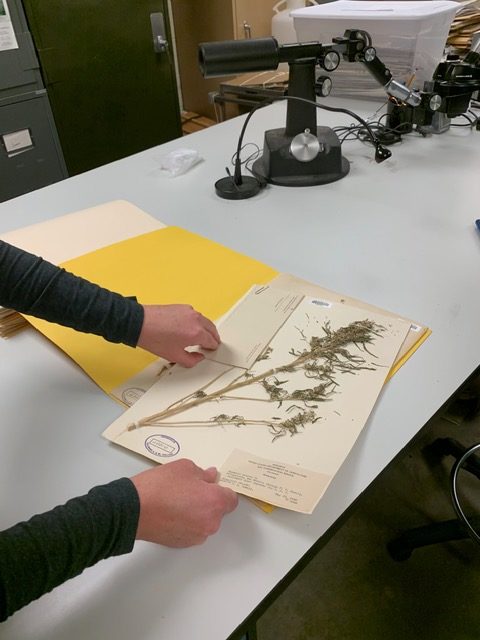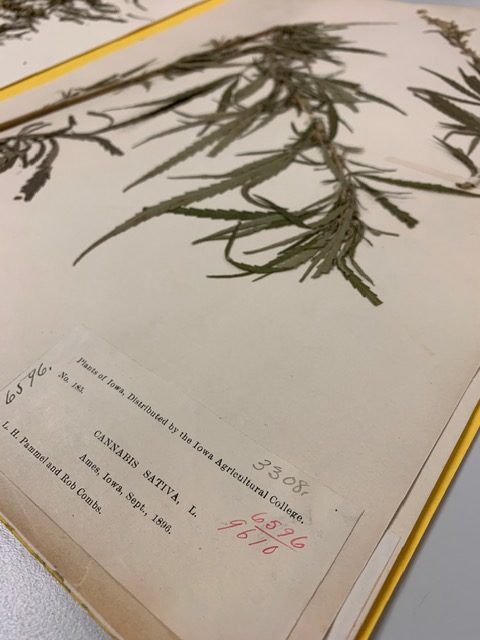
Before Colorado’s land-grant college opened, the surrounding region had been explored by indigenous people, European fur trappers and miners, but not by scientists and botanists.
That changed in 1883, when James Cassidy started the state’s first herbarium on the Colorado Agricultural College campus to collect specimens of flowers, grasses and vascular plants native to the southern Rocky Mountain region. Today, the Charles Maurer Herbarium Collection, housed in the Department of Biology at Colorado State University, is the oldest in Colorado, conserving examples of more than 100,000 species of flora, with specimens dating back to the very beginning.
This library of plants is available for students, researchers, and the general public to enjoy and gain a deeper understanding of the genetic and evolutionary history of Colorado’s ecosystems and ways to protect these valuable, irreplaceable resources.
Historic building, modern research
The modest, century-old research laboratory, near a newly renovated wing of the Anatomy and Zoology Building, is a well-functioning juxtaposition of the old and new.
“Botany was once viewed as a new frontier to explore,” says Jennifer Ackerfield (B.S., ’96, botany; M.S., ’01, botany), curator of the herbarium, “and land-grant institutions like CSU made botany a priority field of study.”
Filled with a half-dozen floor-to-ceiling metal filing cabinets that contain the timeless specimens, the herbarium allows CSU botanists to apply both some of the same proven collection and preservation techniques from the 1880s – such as pressing specimens between two pieces of cardboard for drying – and a growing digital database of plants to conduct state-of-the-art research that addresses the world’s biggest environmental challenges.
“Each collection is a moment in time,” says Ackerfield. “We can pull DNA from plants collected decades ago to identify changes and test species’ boundaries. We’ve also been able to identify certain plants and flowers that are blooming a month earlier today than they did 100 years ago.”
“Each collection is a moment in time. We can pull DNA from plants collected decades ago to identify changes and test species’ boundaries.”
— Jennifer Ackerfield, curator of the herbarium
Ackerfield is passionate about Colorado flora and has studied it for more than 20 years. She is the third curator of the herbarium since 1906 to author a guide to the state’s native plants.
After completing Flora of Colorado in 2015, Ackerfield presented her manuscript to the Colorado Native Plant Society. That’s where she connected with fellow CSU alum Charles Maurer (B.S., ’61, general agriculture; M.S., ’63, botany and plant pathology), who lives with his wife, Ruth (B.S., ’61, physical science; M.S. ’63, mathematics), near Gunnison, Colorado, on land that has been in his family for more than 100 years.
“He was an enthusiastic member,” Ackerfield recalls. “After I made a request to the native plant society for assistance publishing Flora, he said he wanted to help fund my work. We’ve been friends ever since.”
Support for science and students
Maurer also helped fund the herbarium, making a naming gift of $158,000 in 2018 that has been used to improve facilities, increase collections, and support botanical research.
Because of Maurer’s generous gift, Ackerfield has grown her field of study, and experiences the impact it’s making on people in ways she never thought possible. She has been able to take two graduate students along on fieldwork to Arizona and Utah where they collected a species of thistle previously unknown to science.



Ackerfield is also able to extend her public outreach work, serving as a tour guide during the renowned Crested Butte, Colorado, Wildflower Festival.
“Work, and solutions, are limited when we don’t have funds,” she says. “Charles’s support not only allows me to grow educational experiences for students, but it also opens up opportunities for me to bring this science to the people.”
Ackerfield will receive her doctorate in May 2020 and become the head curator of the natural history collection at the Denver Botanic Gardens. She will continue mentoring CSU students and engaging in key University work and, most importantly, she will continue teaching the next generation of botanists to listen to stories captured in irreplaceable moments of time.